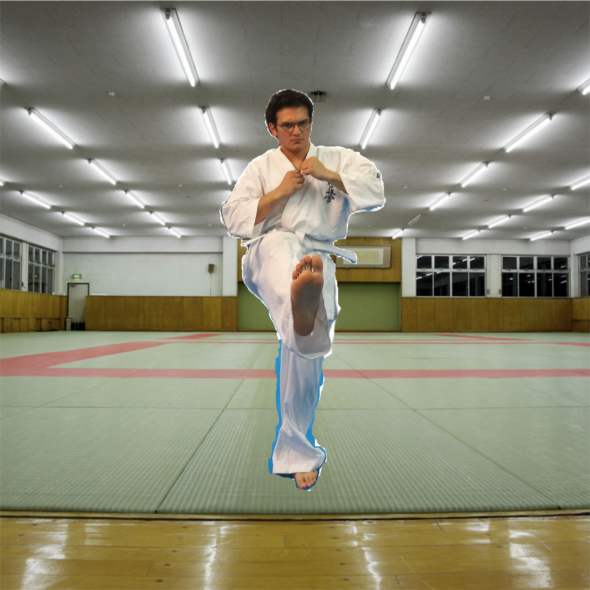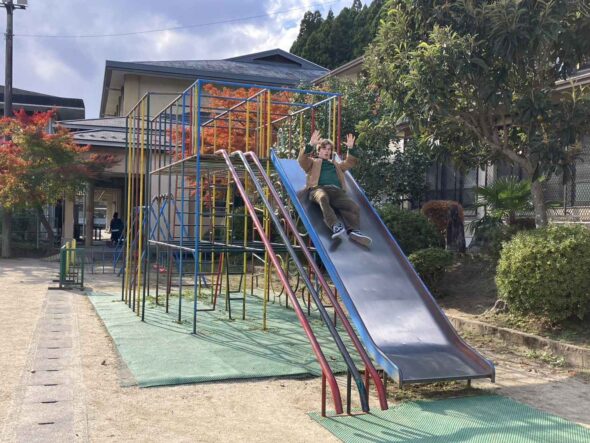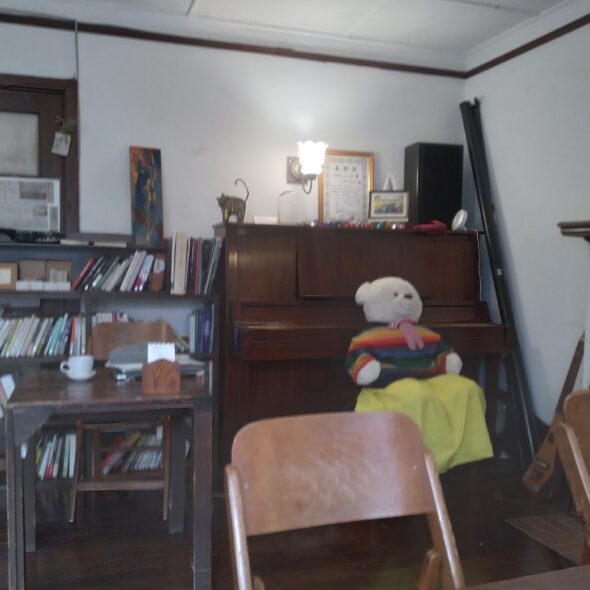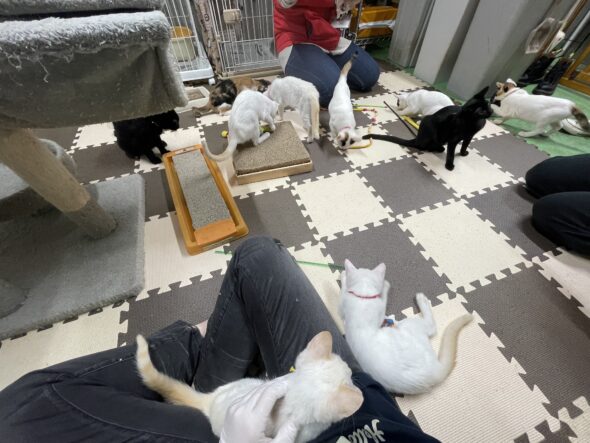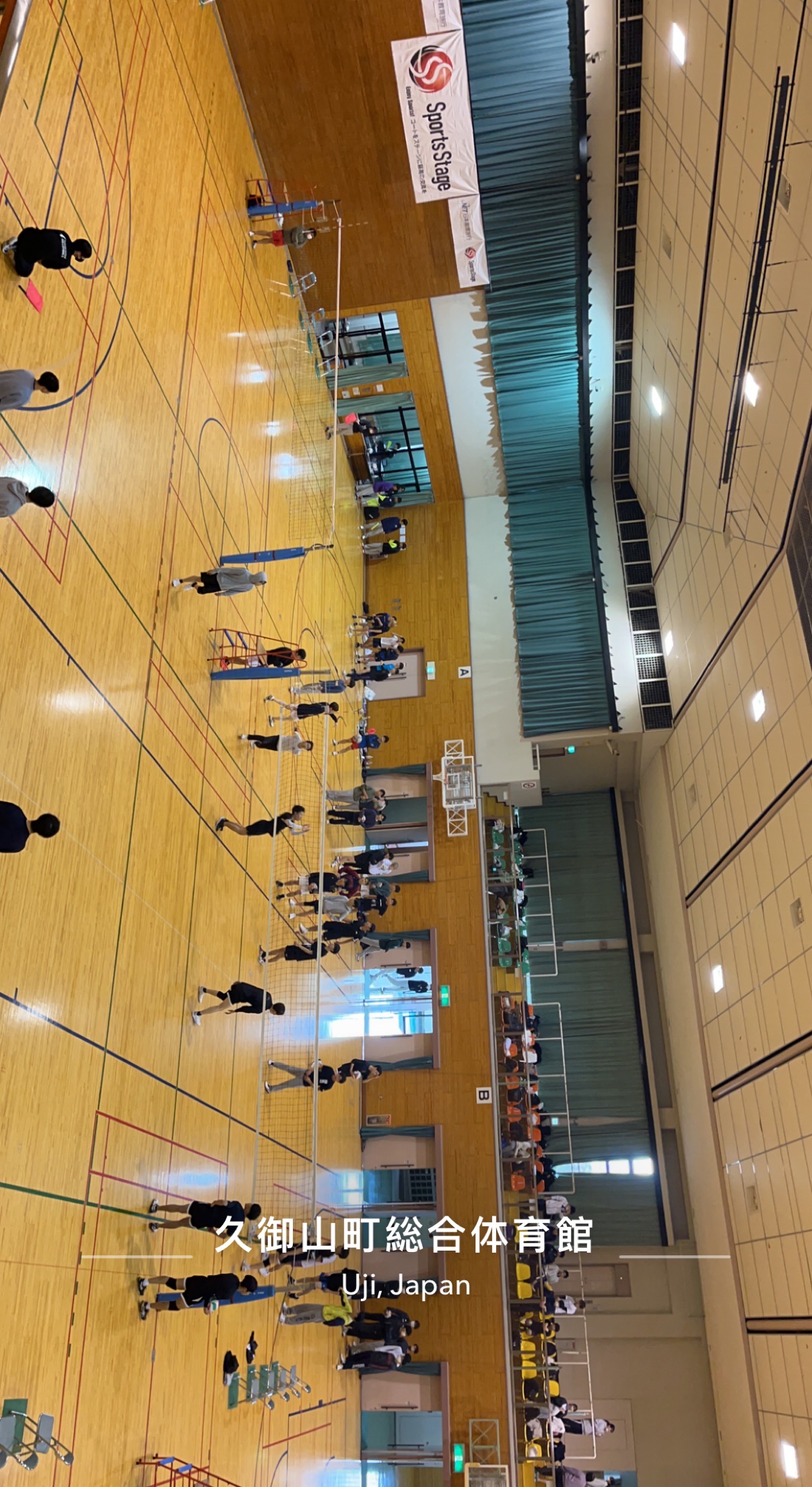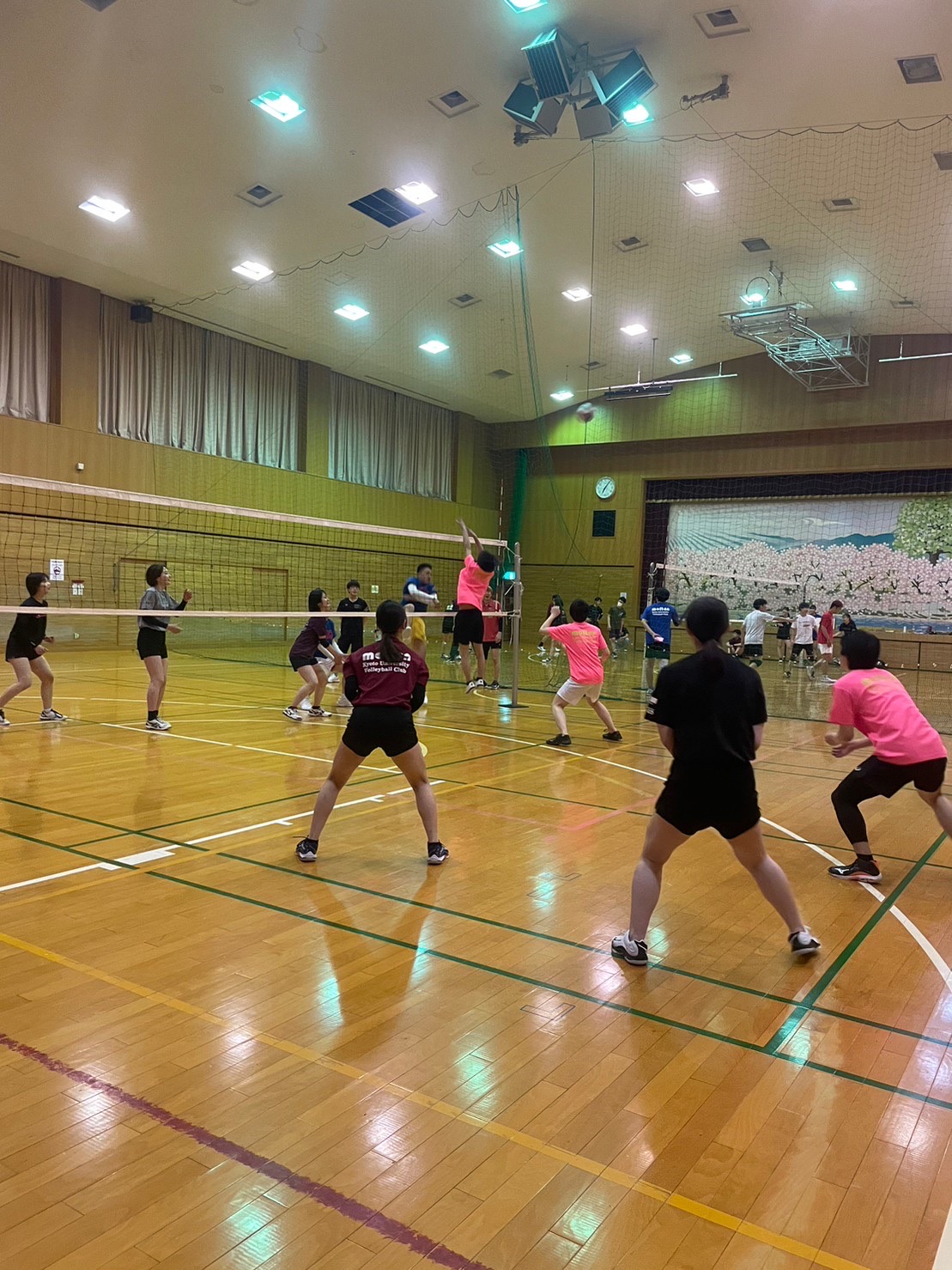In the Fall Semester of 2022, I participated in two volleyball circles, SANDLOT and L, at Doshisha University for my CIP project. The two circles have very distinctive dynamics, and I was able to experience and learn different things from them.
SANDLOT is currently the biggest volleyball circle at Doshisha University, and guys and girls were always separated during practices. Almost every member had played volleyball in high school, so every practice was basically scrimmages after a quick warm-up at the beginning. Most people joined the circle when they were freshmen and they already knew each other very well when I first joined their practice session. They were very friendly to me, and I was the only international student in the circle. However, I also felt a bit awkward sometimes because I was not able to follow their conversations outside of the court. The circle was run systematically overall, with board members in charge of the budget, organizing scrimmages and tournaments, and so on. I think what I learned the most from SANDLOT is the culture of a homogenous Japanese guy group. The language they used was very informal, and they would always be laughing at each other’s jokes. Nonetheless, this group of people was truly passionate about volleyball, and they were all about improving themselves when on the court. I don’t think I fully became a part of the group even at the end of the program (and I don’t think they saw me that way either) but it was a very valuable experience I am glad I had.
The other volleyball circle, L, was almost the complete opposite. The organizers of the circle were Doshisha students, but the frequent participants were almost all international students, from countries such as Brazil, Spain, the UK, and so on. Most of the members have never played volleyball before, so it was difficult to run the game systematically. It was more of a place to chat and socialize than to play serious volleyball, and the club culture is a lot more heterogeneous than SANDLOT. For me, going to SANDLOT practice could be a little stressful, but I felt very relaxed at L. I don’t think I have learned as much about Japanese culture and language through L’s activities, but I was able to talk to people of various backgrounds and learned about their experiences in Japan.
I don’t think I have a preference in the end, and I think they are suitable for people of different interests. If you look for a fun and intensive volleyball experience and want to fully immerse in a Japanese environment, then SANDLOT would be a great choice; if you just want a space to relax after school, then I would recommend L. Nevertheless, members of both circles were friendly and welcoming people, and I am glad I was able to experience both of them.
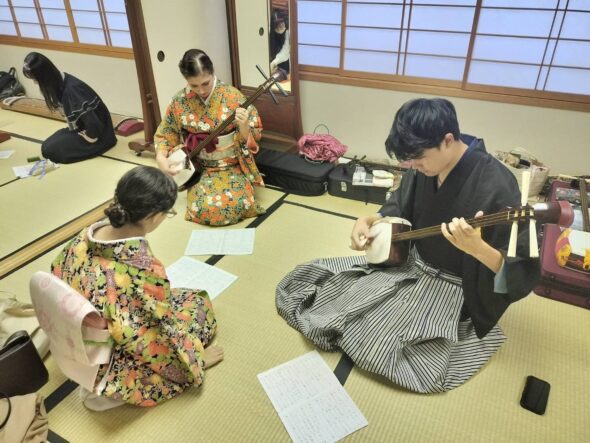

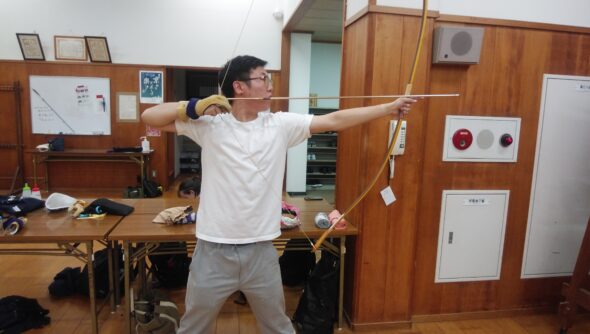 For my CIP this semester, I chose to take lessons in Kyudo, the traditional martial art of archery. I had practices at the Kyoto City Budo Center once or twice a week, and I was instructed by Furuya-sensei, a very kind teacher who has taught KCJS students in the past as well. I have actually been interested in Kyudo for a long time, and I’ve done archery before at a club at my home university, but as Kyudo is a very different kind of activity, I wanted to really learn it from the ground up while I had the rare chance to here in Kyoto. Kyudo is different from regular archery primarily in its objective. Rather than focusing on the particular result of hitting a target accurately, Kyudo emphasizes the form of the process itself, from stepping into the range to drawing the bow and everything in between. The idea is that the shooter focuses not on hitting the target, but completes every defined movement naturally and beautifully with an empty mind, and thus the arrow will always strike its target as a byproduct of one’s consistent efforts. I had an incredible time learning this difficult but rewarding art, and I would encourage anyone even remotely interested to give it a shot. A piece of advice I would give to beginners would be to not go into it with any expectations of yourself, as regardless of your previous experience with archery or other martial arts, you will almost certainly have to learn everything from the ground up, as there are just so many minute details about Kyudo. But should you be willing to fail over and over again until your body has remembered every specific movement and posture, I can guarantee that the feeling of gratification you’ll get when you finally hit the target is like no other.
For my CIP this semester, I chose to take lessons in Kyudo, the traditional martial art of archery. I had practices at the Kyoto City Budo Center once or twice a week, and I was instructed by Furuya-sensei, a very kind teacher who has taught KCJS students in the past as well. I have actually been interested in Kyudo for a long time, and I’ve done archery before at a club at my home university, but as Kyudo is a very different kind of activity, I wanted to really learn it from the ground up while I had the rare chance to here in Kyoto. Kyudo is different from regular archery primarily in its objective. Rather than focusing on the particular result of hitting a target accurately, Kyudo emphasizes the form of the process itself, from stepping into the range to drawing the bow and everything in between. The idea is that the shooter focuses not on hitting the target, but completes every defined movement naturally and beautifully with an empty mind, and thus the arrow will always strike its target as a byproduct of one’s consistent efforts. I had an incredible time learning this difficult but rewarding art, and I would encourage anyone even remotely interested to give it a shot. A piece of advice I would give to beginners would be to not go into it with any expectations of yourself, as regardless of your previous experience with archery or other martial arts, you will almost certainly have to learn everything from the ground up, as there are just so many minute details about Kyudo. But should you be willing to fail over and over again until your body has remembered every specific movement and posture, I can guarantee that the feeling of gratification you’ll get when you finally hit the target is like no other.